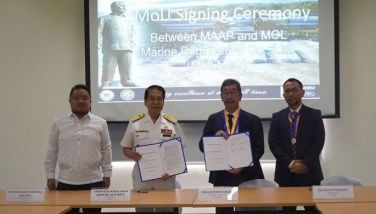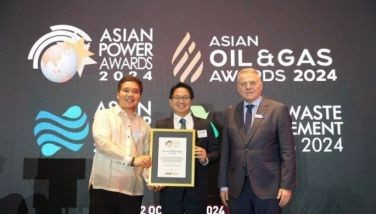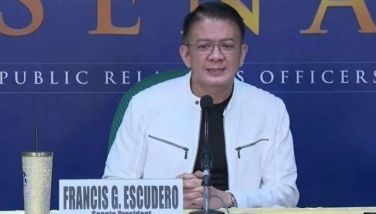Proper solid waste management: Education, engineering, enterprise and enforcement
(Fourth of four parts)
MANILA, Philippines - Ma. Teresa Oliva, program officer of Miriam College’s Environmental Studies Institute, also raised the importance of developing a system that will guide and set people to action on the proper handling and disposal of garbage.
“In the beginning, it might be hard but once a system has been put in place, residents will get used to it,” Oliva said, adding that programs launched in the city or barangay will all the more encourage people to become active participants in addressing the garbage issue.
“As long as the four components of solid waste management are present: Education, Engineering, Enterprise and Enforcement, it means you have established a good program for your community,” Oliva said.
Education, she pointed out, is when you make people aware or provide them with correct information on garbage and how to handle it properly.
“Engineering is when you make technology work or fit in line with solid waste management while enterprise is when you become productive or develop livelihood programs out of the garbage we produce,” she said.
Oliva said enforcement refers to how local officials are able to effectively implement these programs to properly manage and dispose garbage.
She, however, said the program should be well defined like trash bins should be labeled they are for biodegradables or non-biodegradables, and that there should be a regular schedule for trash collection.
“When people realize the benefits of this waste management, waste segregation scheme, they are all the more convinced that they should get involve in it,” Oliva added.
She said what will set people to action are not just the penalties for disobeying laws but also the benefits and incentives they can get out of being responsible with the waste that their households generate.
“I can say that the people’s attitude toward garbage has been improving. In the campus, it also took us several years before we perfected the system and changed the attitude of the community here. We grew up thinking that garbage is garbage, don’t touch it or go near it. We thought before that all types of garbage should just be thrown in one container. But then we later learned that segregation is necessary in line with reduce, reuse, recycle,” she said.
Oliva added: “People now see it as a resource instead of garbage. If you are able to make a paradigm shift, that’s also where education comes in. However, it will also take time because change takes time.”
In the case of depressed communities, Oliva said concerned local officials can help them partner with a well-off community whose residents can teach them how to turn their garbage into something beneficial or something with economic value.
“A number of barangays have already been making bags out of ‘doy’ packs and pieces of used clothing. This is just one of the many examples of livelihood projects that emerged out of recycling,” she added.
She said the best approach to the garbage problem is developing a system or launching programs at the local level. “For example, barangay officials can really focus and be able to check on the system at the household level. And in that manner, the system becomes effective.”
Even haulers, Oliva noted, should also be educated on proper garbage handling.
“In line with creating change in how people look at garbage, we also have to make the system of waste segregation work where residents themselves are active participants,” she said.
Data provided by the Solid Waste Management Office of the Quezon City Environmental Protection and Waste Management Division (EPWMD) show that as of September 2012, biodegradable wastes registered the highest mark with collection placed at 23 percent (298,236.96 cubic meters). Biodegradable waste typically originates from plant or animal sources and may be broken down by other living organisms. Examples are leftover or spoiled food, seeds, fruit and vegetable peelings, and leaves.
Collection of non-biodegradable waste on the other hand, was placed at 22 percent (285,556.96 cubic meters) followed by stationary waste at 14 percent.
Non-biodegradable waste such as plastic bags, clothes, styro, soiled tissue and diapers, cigarette butts and sachets cannot be broken down by living organisms.
Meanwhile, some five percent of bulky waste comprised Quezon City’s garbage collection. Bulky waste cannot be appropriately placed in separate containers because of the bulky size, shape or other physical attributes. Examples are tree cuttings, yard wastes, discarded tires, construction debris, dilapidated furniture, logs and branches.
Romano Rios, chief of the Solid Waste Management Office of Quezon City’s EPWMD, said the effective implementation of waste segregation at source (which refers to dedicated or separate collection of biodegradable and non-biodegradable wastes) since July 2011, is aimed at reducing the waste the city generates.
Rios explained that after the passage of Republic Act 9003 (Ecological Solid Waste Management Act), the objective is for any local government unit to target 25-percent reduction in waste collection, that is a two-percent decrease every year.
“The objective of waste segregation is to lessen the garbage collected. It means being able to reuse or recycle waste so that we become productive, and at the same time, protective of the environment,” he said.
- Latest






























